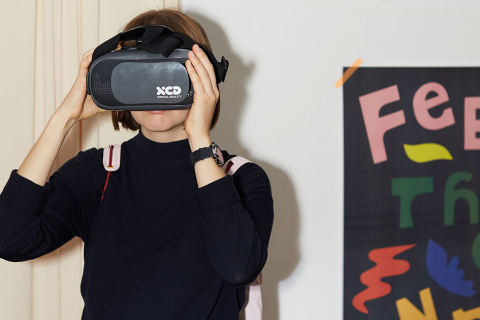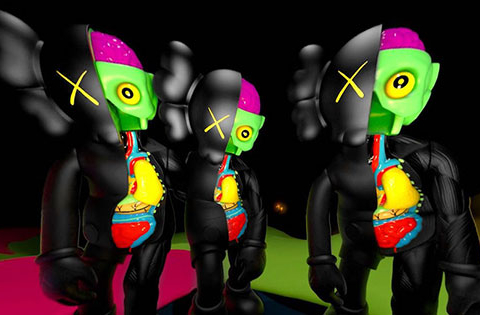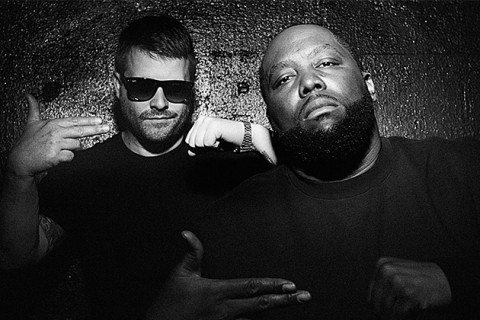
At least for those willing to embrace it, new media and technology have the ability to inspire new forms of creative expression and to significantly inform and impact artistic practice. The increasing popularity of virtual reality has proved to be no exception to this trend, with creative and technological industries coming together to create works that literally take on another dimension. This year seems to be the year of virtual reality in the art world, with several events and exhibitions taking place to celebrate the newfound medium as well as its capacity to bring new light to already existing works.
This year’s Venice Biennale saw the launch of Khora Contemporary, a production company focusing specifically on creating contemporary art using virtual reality. Khora worked with German artist Christian Lemmerz to transform his traditional sculptures into an immersive virtual reality experience. ‘La Apparizione’ invites viewers to get up close and personal with a golden burning corpse of Jesus Christ, complete with flying embers and dripping golden blood. Lemmerz’s sculptures have often touched on themes of religion and criticism of religious deities. Through virtual reality, Lemmerz is able to perpetuate the same ideas in a new medium which is arguably much more confronting than a sculpture, and also allows for a much closer relationship between the viewer and the artwork.
The 2017 Whitney Biennale also embraced virtual reality artwork, with Jordan Wolfson’s piece ‘Real Violence’ attracting widespread media attention for its unapologetically violent depiction of a man being brutally attacked on a city street. In a scene that takes place over 90 seconds, the attacker, played by Wolfson himself, is seen hitting a man with a baseball bat, dragging him to the centre of the sidewalk, and then continuing to kick and stomp on his face. The nature of watching something through virtual reality is that it demands your attention. You can’t turn around and look away, and aside from taking off the headset, you can’t really do anything to stop the scene unfolding. This makes works like ‘Real Violence’ forcedly confrontational, demanding viewers to accept the reality of the situation and in this case, the reality of violence, crime and brutality.
Virtual reality has presented itself not just as a brand new medium, but also as an outlet for traditional media like painting and drawing to take on a new life. Last year Google released the Tilt Brush, an application that can be paired with a virtual reality headset to create room-scale drawings, paintings and even sculptures. These works can be animated and shared, and viewers can walk in and around them to have a fully immersive sensory experience. To promote its release, Google collaborated with various artists, designers, animators, and even dancers for an Artist in Residence Program, which produced incredible results even when viewed in two dimensions. The works are animated, dynamic, and filled with a sense of movement and energy that’s almost impossible to replicate with traditional media.
Virtual reality has also allowed us to give new meaning to existing artworks and to explore these works in a new light. In 1945 Australian artist Sidney Nolan painted a portrait of Ned Kelly using thick black paint to depict his iconic suit of armour helmet. The work, titled ‘Nobody knows anything about my case but myself’, has long been the subject of speculation by art curators and researchers who believed there was something hidden behind the layer of black paint. Earlier this year, technology used by the Australian Synchrotron revealed the face behind the mask, which was exhibited in a virtual reality exhibition at the Heide Museum of Modern Art. The original painting was put on display in the exhibition space Heide 1 beside an Oculus Rift headset. Once gallery patrons put on the headset, they were transported to a reconstruction of the same gallery space, but with the new uncovered painting. This technology has allowed viewers to gain a deeper insight into the late artist’s practices and the processes that make up his work.
Virtual reality has had an impact on a plethora of different industries, from its use in military and space training to its influence in video games and entertainment. Virtual reality has only just started to break into the art world, but based on the current trends there’s no doubt that virtual reality in contemporary art has an exciting future ahead.
- Words: Ikumi Cooray



